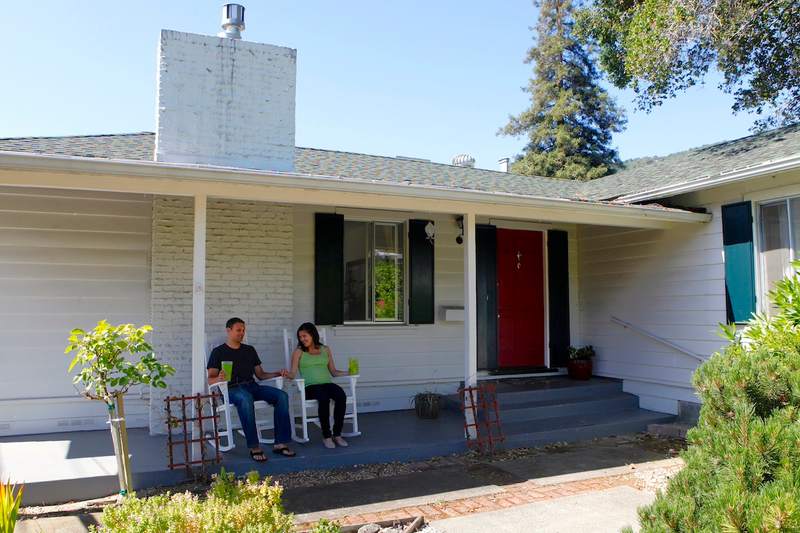There is no limit on how many times you can use a VA loan to purchase a home. VA loans are designed to help those who qualify to purchase a primary residence. Since VA loans have incredible benefits like being government-backed and having a zero down payment, there are restrictions around using VA loans.
Most often, borrowers get a new VA loan when they sell their existing home and purchase a new one. However, there are lots of different situations where you might qualify for a second VA loan. For example, if you’re on active duty, VA loans can provide flexibility when transitioning from one base to another.
Let’s look at what a VA loan is, who can get one and how many times you can use one. We’ll also look at what a VA entitlement is and how to use it.
What Is A VA Loan?
VA loans are a type of home loan backed by the Department of Veterans Affairs (VA). Though they’re backed by the government, the loans are offered through banks and mortgage companies. VA loans are designed to offer benefits such as lower interest rates, along with having no primary mortgage insurance and no required down payment.
See What You Qualify For
Buy A Home
Discover mortgage options that fit your unique financial needs.

Refinance
Refinance your mortgage to have more money for what matters.
Tap Into Equity
Use your home’s equity and unlock cash to achieve your goals.
Who Can Get A VA Loan?
VA loans are offered to eligible veterans, active-duty service members, qualifying members of the National Guard and qualifying surviving spouses. As with any loan, there are eligibility requirements for home buyers, both from the government and your lender.
On the government side, you need to meet a minimum of ONE of the following criteria:
- A minimum of 181 days of active service during peacetime.
- At least 90 consecutive days of active service during wartime.
- More than 6 years of service with the National Guard or Reserves or 90 days under Title 32 with at least 30 consecutive days.
- You’re the spouse of a service member who lost their life either in the line of duty or as the result of a service-related disability. Generally, surviving spouses may not be remarried.
If you’ve been discharged as a result of a service-connected disability, minimum service time requirements don’t apply. You can learn more about VA loan eligibility requirements through the U.S. Department of Veteran Affairs.
How Do You Prove Your Eligibility For A VA Loan?
Your certificate of eligibility (COE) is a document provided by the VA that shows your lender that you meet the criteria for a VA loan. The COE also provides an entitlement code that proves your or your deceased spouse’s qualifying military service to your lender and tells them if you’ll need to pay the VA funding fee. This is a fee paid to the VA, which helps fund other VA loans.
In addition to the government requirements, each lender will have VA loan credit score and income requirements for their borrowers.
Can I Use A VA Loan More Than Once?
There’s no limit to how many times you can use your VA loan benefit over your lifetime, assuming you still meet the requirements set by the VA and your lender. That said, VA loans are used to purchase or refinance a primary residence. This means that even though there is no limit on how many VA loans you can have, there are limitations on how many you can have at one time.
Additionally, you’ll need to look at your VA entitlement to determine how much of your loan the VA will guarantee. This affects how much you can borrow without having to make a down payment. We’ll talk about how your entitlement works later on.
How Many VA Loans Can You Have?
Depending on the situation, you can have up to two VA loans at a time. Usually, these situations are short-term or transitional. You can use a VA loan to buy a home or to refinance your current home, but it must be designated as the place you live for most of the year.
Let’s take a look at some of the situations where you might get a second VA loan.
When You Might Need A Second VA Loan
There are a few situations where you might need a second VA loan either simultaneously or consecutively. Here are a few common examples:
- Relocation: If you’re a service member who receives permanent change of station (PCS) orders and you have to move to a new duty station, you may qualify for a second VA loan. This exception is intended to allow for two primary residences during transition periods.
- Foreclosure: If you had a VA loan, but lost your home due to foreclosure, you can use your VA benefit again after waiting a certain amount of time after your foreclosure. The waiting period is usually 2 years but may vary based on financial hardship and lender requirements.
- Loan assumption: A mortgage assumption is when someone takes over your home loan. They take on your current interest rate, monthly payments and loan balance. For a VA loan assumption, the person who takes over the loan must be a qualifying veteran. In this situation, their VA loan benefits are exchanged for yours, and your full entitlement is restored.
- Restore your entitlement: Once you’ve paid off your home, you have a one-time right to restore your entitlement and keep your current home. You could use a new VA loan to buy a new primary residence and keep your first home as a vacation home or rental property.
Find out if a VA loan is right for you.
See rates, requirements and beneifts.
Understanding The VA Loan Entitlement
Your VA loan entitlement is the amount the VA is willing to pay your lender if you default on your loan. Your VA entitlement is generally 25% of your loan amount.
Your COE has an entitlement code, which shows your lender how you earned your entitlement. It’ll also show your basic entitlement amount of $36,000. The 25% rule means that if your basic entitlement amount is $36,000, the VA will guarantee 25% of a loan up to $144,000.
This doesn’t mean your loan amount has to be $144,000 or less. Your loan amount might be higher, if it is, you’ll be eligible to use your bonus entitlement. Keep in mind, your lender will have their own qualifications to determine the size of the loan you qualify for. With limited exceptions below, the VA doesn’t set loan limits of its own.
Bonus Entitlement
Your bonus entitlement kicks in when your loan is over $144,000. If you have full entitlement, the VA will cover 25% of your loan amount, even if it’s more than $144,000. If you have a reduced entitlement because of a previous VA loan, minus the amount of your entitlement you’ve already used. The conforming loan limit is the maximum dollar amount of a mortgage that government-sponsored enterprises like Fannie Mae or Freddie Mac would guarantee if this was a conforming loan.
Using Your Full Entitlement
Having your full entitlement means either you’re a first-time VA loan user, or you’ve fully paid off a previous VA loan. This means you have that full $36,000 entitlement amount. Because there’s no limit on how many times you can use your VA loan benefit, each time you pay off a VA loan, that $36,000 is restored.
Using Partial Entitlement
If you have a previous VA loan, you may only have a partial entitlement. But you can still use your partial entitlement, also called a reduced entitlement, to take out another VA loan. Here are some situations where you might have a reduced entitlement:
- You have a current VA loan and you’re still paying back.
- You’ve paid off your VA loan in full but still own the home you purchased and haven’t applied for entitlement restoration.
- You defaulted on a previous VA loan.
Regardless of the situation, your COE shows your reduced entitlement. If you do have partial entitlement, the VA will guarantee the lesser of the following:
- 25% of the loan amount
- 25% of the county conforming loan limit minus the used portion of your entitlement
Using a partial entitlement means the VA will only guarantee your loan up to that conforming loan limit, minus the entitlement you’re using in your current situation. You can still borrow more than your entitlement (again, based on your lender’s qualifications), but you’ll likely have a down payment to make up the difference.
Calculating Your Remaining Entitlement
If you have a reduced entitlement, you’re probably wondering how much you can borrow and have a zero down payment. To get a better idea of how much you can afford, let’s look at how to calculate your remaining VA entitlement:
1. Multiply your original loan amount by 0.25. This equals the entitlement you’ve already used. For example, let’s say your original loan amount was $300,000. Here’s how you would calculate the entitlement you’ve used:
300,000 x 0.25 = $75,000
2. To calculate your full entitlement, you’ll need to look at your county’s conforming loan limit. The maximum entitlement amount is 25% of the county’s conforming loan limit. For most of the country, the limit in 2024 is $766,550. Keep in mind that this number varies and it may be higher in high-cost areas. Here’s how you’d calculate your maximum entitlement:
$766,550 x 0.25 = $191,637.50
3. You can use your full entitlement and your used entitlement to calculate your remaining VA entitlement. To do this take the maximum entitlement and subtract the entitlement you’ve already used.
Maximum entitlement = $191,637.50
Used entitlement = 75,000
Here is how to calculate your remaining entitlement:
$191,637.50 – $75,000 = $116,637.50
Now that you’ve calculated your remaining entitlement, you can calculate the loan amount the VA will guarantee with no down payment. To find the loan amount you’ll multiply your remaining entitlement by four. Here’s what that looks like with our example numbers:
$116,637.50 x 4 = $466,550
In this scenario, $466,550 is the maximum amount you can borrow with no down payment. This doesn’t mean this is the maximum amount you can borrow, but if you borrow more you’ll need to make a down payment.
Keep in mind that the number may vary based on your location and previous use of your entitlement.
Guide to VA Loans
Discover a more affordable loan option for United States Veterans, Service Members and spouses.
The Bottom Line
VA loans are an excellent benefit for veterans, active-duty service members and qualifying spouses to use for affordable mortgage and housing options. The best part is you can use this benefit as many times as you want during your lifetime.

Michelle Giorlando
Michelle Giorlando is a freelance writer who lives in metro Detroit. When she's not writing about homeownership, finances, and mortgages, she enjoys performing improv, gardening, and befriending the wildlife in her yard.












